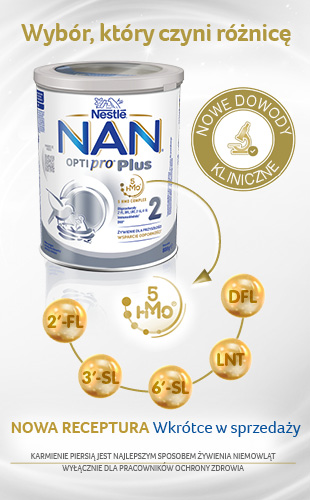UWAGA!
Wszystkie zamówienia złożone od 23 kwietnia zostaną zrealizowane (wysłane) dopiero 29 kwietnia.
Za utrudnienia przepraszamy
CIĘŻKI ZESPÓŁ SUSZONEJ ŚLIWKI – OPIS PRZYPADKU
Słowa kluczowe / Keywords:
Streszczenie:
Zespół suszonej śliwki (Prune Belly Syndrome – PBS) jest rzadką wrodzoną wadą wyłącznie u chłopców określoną przez triadę: niedorozwój mięśni brzucha, ciężka wada dróg moczowych i wnętrostwo. Nadmierne rozciągnięcie pęcherza moczowego jest spowodowane przez niedrożność cewki i prowadzi do degeneracji mięśni brzucha i niewydolności jąder. Zaburzenia oddawania moczu z pęcherza moczowego prowadzi do hipoplazji płuc, małowodzia oraz zespołu Pottera. Zespół ma szerokie spektrum uszkodzeń anatomicznych w różnym stopniu ciężkości. Dokładna etiologia PBS nie jest znana, chociaż kilka teorii embrionalne próbują wytłumaczyć rozwój anomalii. Przedstawiamy noworodka chłopca z PBS. Diagnoza została potwierdzona przez badanie kariotypu, ultrasonografię oraz badanie śródoperacyjne.
Abstract:
Prune belly syndrome (PBS) is a rare congenital anomaly almost exclusive to males defined by the triad of abdominal muscle deficiency, severe urinary tract abnormality and cryptorchidism. It is caused by urethral obstruction resulting in massive bladder distension early in development, leading to degeneration of the abdominal wall musculature and failure of testicular descent. The impaired elimination of urine from the bladder leads to oligohydramnios, pulmonary hypoplasia, and Potter's syndrome. The syndrome has a broad spectrum of affected anatomy with different levels of severity. The exact etiology of PBS is unknown, although several embryologic theories attempt to explain the anomaly. We report a newborn boy with PBS. Diagnosis was confirmed by karyotyping, ultrasound investigation and intraoperative findings.Treść:
Introduction
Other names for Prune Belly Syndrome (PBS) - Eagle-Barret syndrome, Osler-Parker Syndrom, Mesenchymal dysplasia syndrome. It is associated with malformation of urinary tract and bladder, or genitourinary abnormalities [1,2,3,4]. These cause accumulation of fluid that distends the abdomen resulting in atrophy of the abdominal muscles. The wrinkled appearance of the dystrophic abdominal wall is responsible for the Prune like appearance of the abdomen. Clinically the syndrome is divided into three stages of severity: mild is characterized by availability of three main features, average - in addition to the triad, there is dilated ureter, the severe form of the syndrome - hydroureter, hydronephrosis, renal dysplasia and the Potter syndrome (urethral obstruction causes oligohydramnios and its consequences such as pulmonary hypoplasia, skeletal deformation) [5,6,7,8,9].
Case report
A male baby was received from the maternity hospital on the first day of birth with vesical shunt, flabby abdominal wall, bilateral cryptorchidism and slight respiratory insufficiency. On the 19 week of gestation the renal and ureteral malformation was diagnosed. On the 21 week the vesico-amniotic bypass surgery under ultrasound control was performed. The baby was born on the 35 week from 37-old mother with weight 2660g by pathological vaginal delivery because of breech presentation, with well-manifested oligohydramnios. Apgar score in the first and fifth minute was 7. Serum creatinine concentration was 70 μmol/l, serum urea concentration was 3,6 μmol/l serum sodium was 136 mmol/l and serum potassium was 5,3 mmol/l. The diuresis from the vesical shunt – 1,7 ml/kg/h. The ultrasound investigation confirmed bilateral ureterohydronephrosis and hypoplasia of kidneys which is the indication to the operative treatment (Fig. 1). The next day the bilateral T-shaped ureterostomy was performed. Intraoperatively the bilateral ureterohydronephrosis, renal hypoplasy, ureteral hypoplasy was ascertained (Fig. 2). In the postoperative period the baby received infusion, antibacterial and symptomatic treatment, stayed on the endotracheal intubation in the SIMV mode till the age 2 months, after what the baby was successfully extubated and transferred from the resuscitation department to the department of pediatric surgery for newborns.
Histological examination of the resected tissue of the ureters showed aplasia of its’ muscular layer. On the postoperative ultrasound investigation of the pelvic cavity was visualized that right kidney 28x14 mm, left kidney 25x13, parenchyma with increased echogenicity, without cortico-medullary differentiation “white kidneys”. In the kidneys’ lumen – drainages. Bladder volume – 20ml, ureters in the lower third are crimped with diameter: right–12 mm, left–14 mm. Dynamics of the serum concentration of creatinine, urea, potassium and sodium is showed on the fig 3, fig 4. Postoperative urine volume from right and left ureterostomes is showed on the fig 5.
Conclusion
The present case is a complete variety of severe Prune Belly Syndrome due to abdominal muscle deficiency, genito-urinary defects, Potter’s syndrome. The baby died on the day of birth due to cardiorespiratory failure. Children with PBS should be evaluated and treated at institutions equipped with current imaginary facilities and by urologists who have complete knowledge of the wide spectrum of this disorder. Genetic counseling of parents is important, especially those with a history of abortion, perinatal death, or with a family history of genetic diseases. Besides, the pregnant ladies should have regular antenatal check up and health education regarding intake of nutritious food, folic acid, required vitamins and minerals. Medicines should be avoided, unless a doctor advices.
Fig 1. Ultrasound investigation on the second day of life
Fig. 2. Intraoperative ureter
Fig 3. Dynamics of serum urea and serum potassium (mmol\l)
Fig 4. Dynamics of serum creatinine and serum sodium (mmol\l)
Fig 5. Postoperative urine volume from right and left ureterostomes


